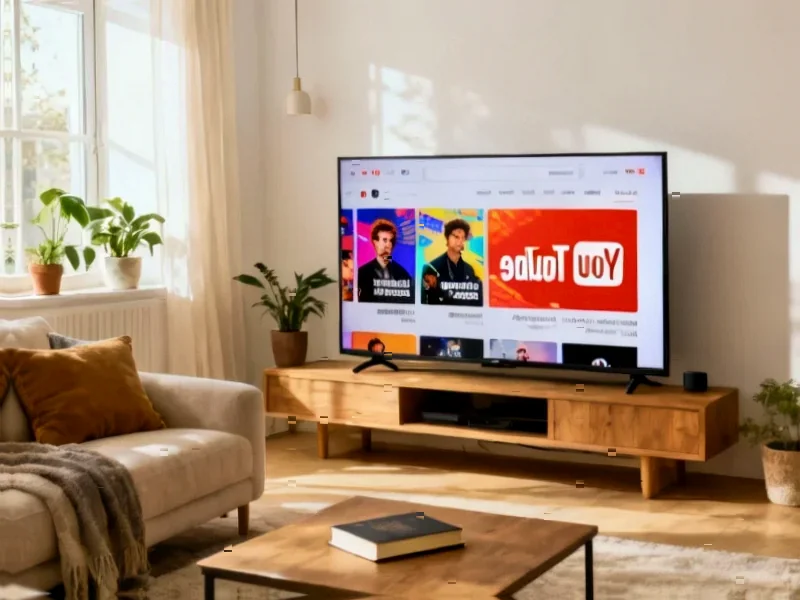According to SamMobile, Google has introduced a significant redesign for YouTube Music on select Galaxy Watches running Wear OS 6, featuring colorful backgrounds for playlists, vertical posters with rounded corners, and a redesigned Browse button that hugs the smartwatch’s screen bezels. The new interface uses bolder fonts and increased vertical spacing between list items, making music selection easier on the smaller screen. Currently, the updated design language appears only in limited sections of the app, suggesting a gradual rollout. The changes appear to align with Google’s Material 3 Expressive UI design principles introduced with Wear OS 6, though it remains unclear whether Samsung will fully adopt this design language across its wearable ecosystem.
The Wearable Music Streaming Battle Heats Up
Google’s timing with this YouTube Music redesign isn’t accidental. The wearable music streaming market represents one of the fastest-growing segments in digital entertainment, with global wearable device shipments expected to exceed 650 million units by 2025. Apple has dominated this space through its tight integration between Apple Music and Apple Watch, creating a seamless ecosystem that keeps users locked in. Google’s move to refresh YouTube Music on Galaxy Watches represents a direct challenge to Apple’s dominance while strengthening its partnership with Samsung. This is particularly crucial as Samsung holds approximately 10% of the global smartwatch market, making it the largest Wear OS partner and a critical ally in Google’s wearable strategy.
The Business Model Behind the Design
Beyond aesthetics, this redesign serves Google’s broader monetization strategy. Wearable-optimized interfaces drive increased engagement, which translates directly to revenue through several channels. For YouTube Music’s subscription service, better user experience on watches could reduce churn and increase conversion rates from free to paid tiers. For Google’s advertising business, improved engagement means more opportunities to serve ads across YouTube’s broader ecosystem. The timing aligns with Google’s recent push to make YouTube Music a more formidable competitor to Spotify and Apple Music. By improving the wearable experience, Google addresses a key weakness in its music streaming proposition while creating additional touchpoints to keep users within its ecosystem.
Strategic Positioning Against Key Rivals
Google faces intense competition on multiple fronts in the music streaming space. Spotify continues to lead in overall subscribers but has struggled with wearable integration, particularly on non-Apple platforms. Apple’s seamless integration between Apple Music and Apple Watch represents the gold standard that Google is attempting to match. Amazon Music presents another challenge, especially given Amazon’s growing presence in wearable technology through products like Amazon Halo. By focusing on design improvements specifically for Samsung’s Galaxy Watches, Google is playing to its strengths—leveraging the Android ecosystem’s largest hardware partner to create a competitive alternative to Apple’s walled garden. This move also positions YouTube Music as the premium music experience for Android-based wearables, a strategic differentiation from Google’s own Pixel Watch focus.
The Road Ahead: Implementation Hurdles
The phased nature of this rollout highlights significant challenges Google faces in the wearable space. Unlike Apple’s controlled ecosystem, Google must navigate the fragmentation of Wear OS across multiple manufacturers, each with different hardware capabilities and design preferences. The fact that Samsung’s adoption of Material 3 remains uncertain underscores the delicate balance Google must maintain with its hardware partners. Additionally, developing for Wear OS presents unique technical challenges, including limited screen real estate, battery life constraints, and the need for offline functionality. Google’s gradual approach suggests they’re testing user response and technical performance before committing to a full-scale redesign, a prudent strategy given the high stakes in the competitive wearable market.
Market Implications and Future Direction
Looking forward, this redesign signals Google’s commitment to making wearables a core part of its music streaming strategy. As smartwatches become increasingly independent from smartphones—with LTE connectivity and standalone apps—the quality of music streaming experiences will become a key differentiator. Google’s investment in YouTube Music for wearables suggests they see this as a growth vector that could help close the gap with Apple Music and Spotify. The success of this initiative will depend on broader adoption across the Wear OS ecosystem and whether Google can maintain design consistency while accommodating partner preferences. If executed well, this could position YouTube Music as the default choice for Android-compatible wearables, creating a sustainable competitive advantage in a market where ecosystem integration increasingly determines success.




